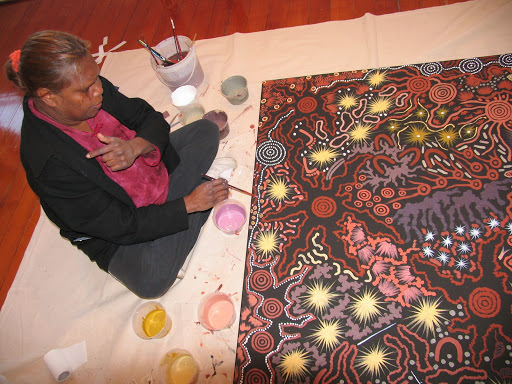Well, it's true - or at least Gabby says she is coming. She IS a tad famous for not being where she says she will be, but she sounds fairly determined this time.
The plan is she will come into the gallery around 12 and be painting for us for at least the next week.
This means all her collectors and would be collectors can come in, have a glass of wine, meet Gabby and watch her paint. It is fascinating.
Gabby, daughter of Clifford Possum, the most famous of all Australian indigenous artists, has as much talent as her father - some think more! Her works are traditional but have a wonderful softness and beauty to them that was not usually seen in Clifford's work. She is a consummate artist, mixing all her own paints, fussy about her brushes, and painting to the tune of a vision she holds in her mind as her stories unfold on the canvas.
Last time Gabby visited, some of our clients were lucky enough to commission their own works and watch her paint them. You may be able to do the same. this photo was taken last visit: the painting is only half way through, with Gabby laying out all the elements of a 'Grandmother's country' painting - my favourite subject matter for her works.
